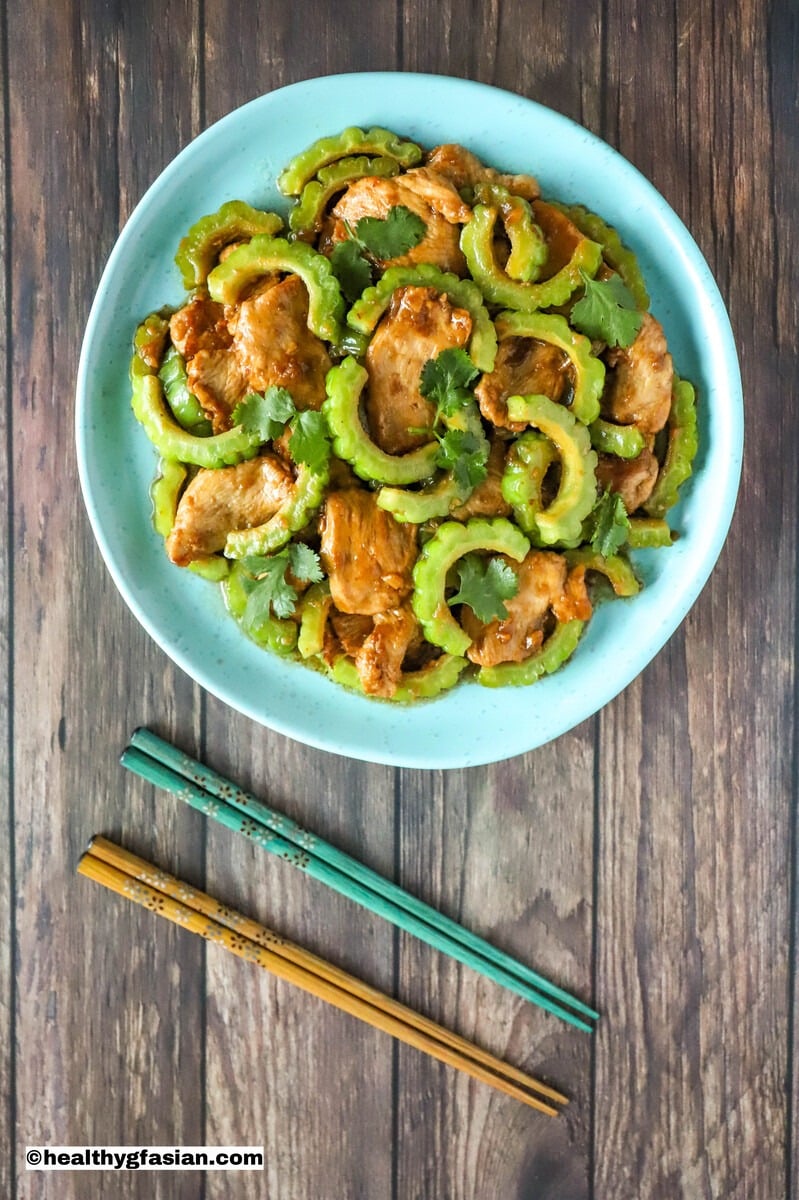There are many popular dishes in Chinese cuisine that use bitter melon as a staple ingredient. Many people highly price bitter melon for its bitterness in Chinese culinary uses. They also valued it for its medicinal properties in Traditional Chinese Medicines. Some popular Chinese dishes are Bitter Melon and meat (beef, chicken or pork) stir fried with fermented black bean sauce. As well as Braised Chicken and Bitter Melon; Steamed Stuffed Bitter Melon with minced pork; Bitter Melon and Egg stir-fry. In addition, we can add bitter melon to salads, pickled and boiled in soups. And many often dry bitter melons and make it into herbal tea. Another popular dish in Malaysia, stuffed tofu (Yong Tau Foo) also uses bitter melon.
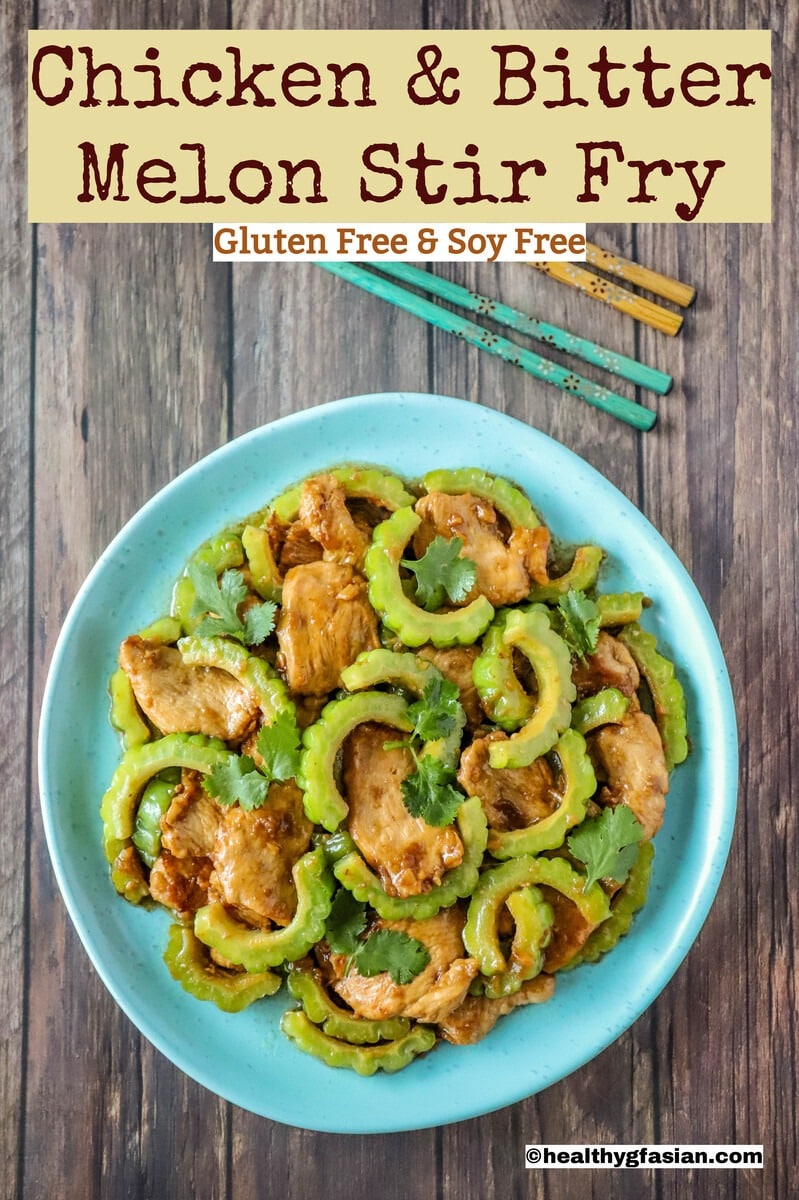
Gluten Free Chicken and Bitter Melon Stir-Fry
For my easy Chicken and Bitter Melon Stir-Fry weeknight dinner recipe, I have used sliced chicken pieces and bitter melon. Stir-fried in a ginger, garlic, dry sherry, honey and coconut amino sauce that is gluten free and soy free. I have added honey to reduce the bitterness but optional if you prefer bitter taste of the melon like me. This Chicken and Bitter melon Stir-Fry recipe is also low carb, dairy free, egg free, and nut free. Plus refined sugar free and allergy friendly. For paleo, serve with cauliflower rice instead.
You may like to try my other chicken stir fry recipes:

History of Bitter Melon
Bitter melon (Momordica charantia) is the edible fruit of a tropical and subtropical annual plant. It is part of the Cucurbitaceae family, just like cucumber, pumpkins and watermelons. Moreover, other common names used are bitter gourd, bitter apple, bitter cucumber, bitter squash, balsam pear, karela, goya. It originated in India and subsequently brought to China during the 14th century. Many people broadly use bitter melons in Asia and particularly in India and China for cooking and for medicinal purposes. Today, they widely grow bitter melons for commercial sales in Asia, Africa, South America and the Caribbean.
Medicinal Uses of Bitter Melon
Traditional Chinese medicines and Ayurvedic medicine have used bitter melon for hundreds of years to treat diabetes. Besides, it is a natural hypoglycemic and used as a remedy for other ailments. For example, digestive problems, respiratory diseases, skin disorders, injuries, gout and rheumatism. Researchers have many health promising and affirmative results for bitter melon in recent years. And as a result, manufacturers include bitter melons in many types of dietary supplements. Likewise, they add bitter melons to capsules and green powder sold in pharmacies and health food stores.
Additionally, many bloggers promote many bitter melon recipes for juices and smoothies on the internet. With claims that bitter melon will help prevent diabetes and lower blood sugar. Moreover, they even make bitter melon into face cream for treating acne and skin irritations.
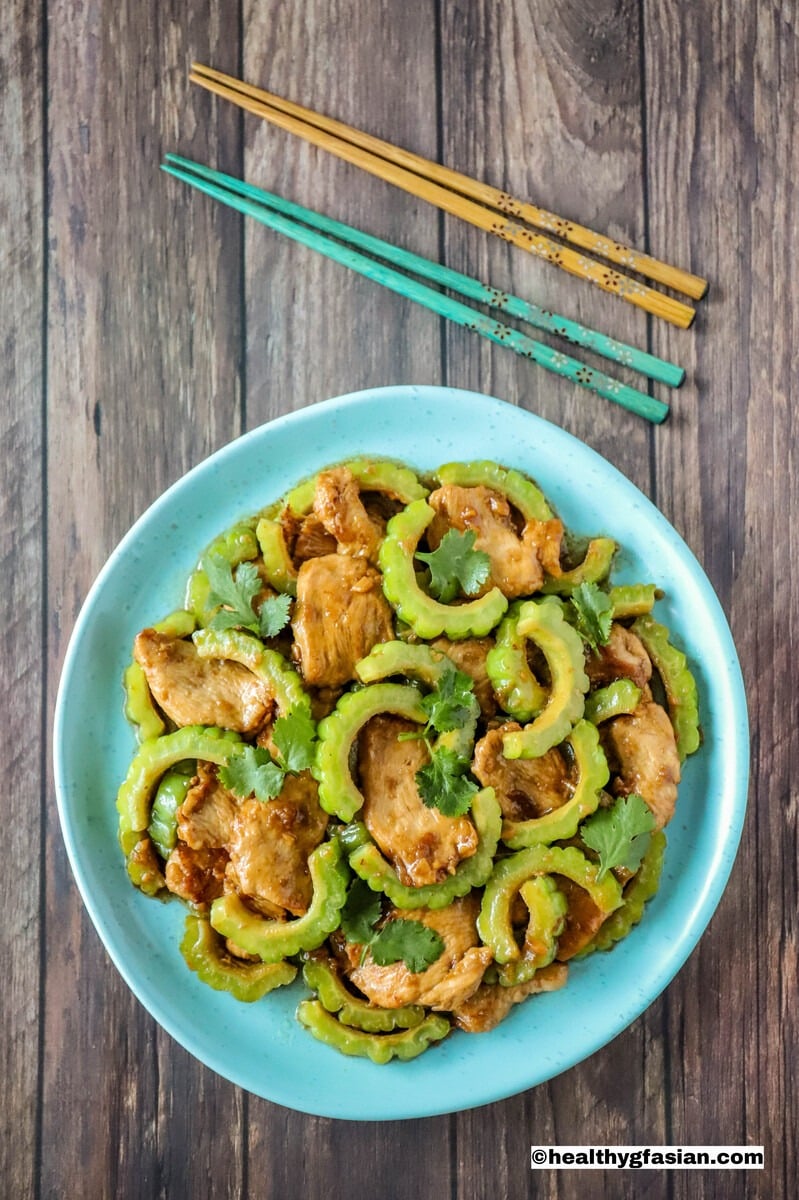
Nutritional values of Bitter Melon
Bitter melon is low in calories and high in dietary fiber. Bitter melon is full of essential vitamins and minerals, antioxidants. And other bioactive compounds like alkaloids, steroidal saponins, polypeptide and aromatic volatile oil. The main components of bitter melon are charantin, momordicine and p-insulin which are steroidal saponin, alkaloid and polypeptides correspondingly. Momordicine and charantin are primarily accountable for the health benefits and the bitterness of bitter melon. Bitter melon is particularly rich in vitamin C. And also an excellent source of vitamin A and vitamin K plus a good source of folate and potassium. In addition, bitter melon also has some zinc and iron.
Health Benefits of Bitter Melon
The many health benefits of bitter melon may include the following:
- Help lower blood sugar level;
- Prevention and management of diabetes;
- Decrease bad cholesterol level; reduce blood pressure; lower risks of cardiovascular diseases;
- Decrease blood cholesterol levels;
- Assist in weight loss;
- Support healthy digestive system;
- Promote radiant skin and hair;
- Help treat skin disorders like acne, psoriasis and eczema;
- Prevent growth of cancer cells in the pancreas, liver, colon , prostate or breasts;
- Detoxify the body; support healthy eye sights and boosts the immune system;
- Help relief the side effects of chemotherapy and radiation during the treatment of cancer as indicated by research;
- Has antiviral, antibacterial and anti-inflammatory properties; and
- May help in the treatment of HIV, AIDS and herpes, as it contains MAP30 protein.
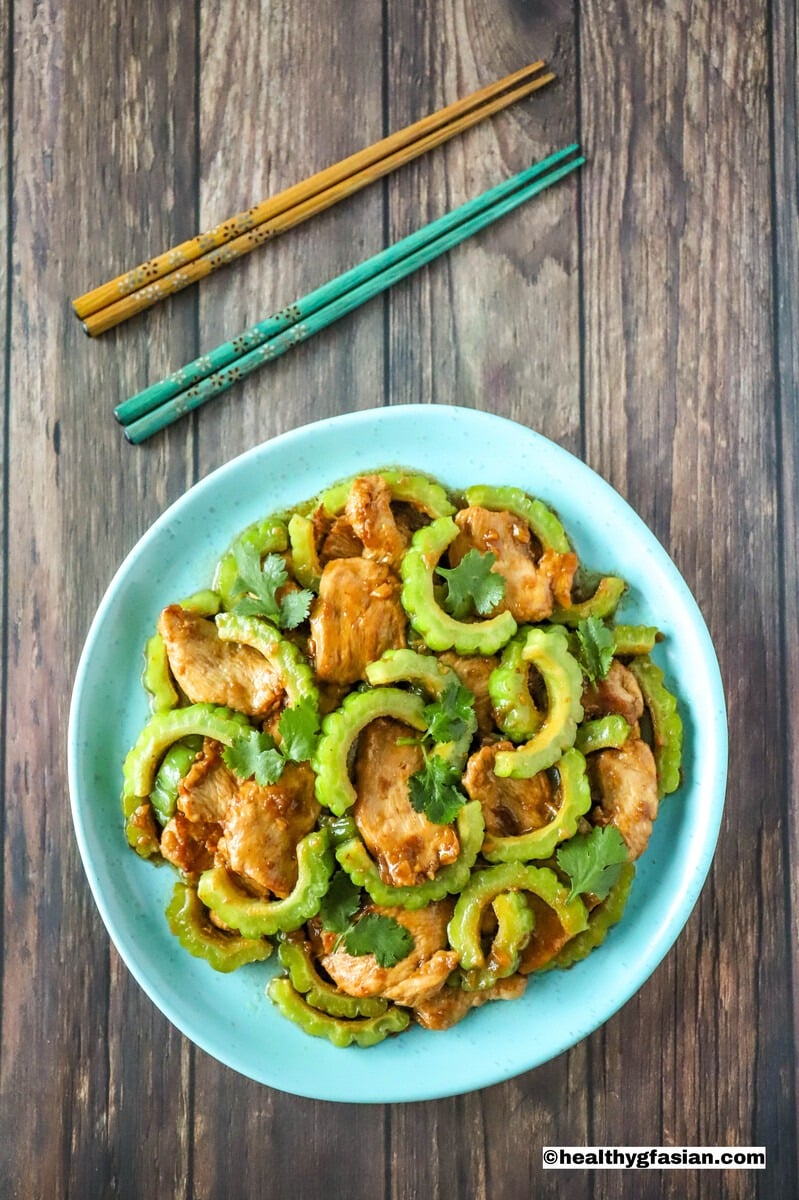
Choosing and Storing Bitter Melon
The most common kind of bitter melon is the Chinese variety, light green in colour with uneven and bumpy skin. Besides, they are available in Asia and Asian groceries stores and specialty fruits and vegetables stores in the Western countries. Typically, Chinese bitter melons are around 7 to 12 inches long. Another type of bitter melon is the Indian variety, darker green in colour, coarse texture and narrowing ends. Indian bitter melons are around 6 to 10 inches in length. In addition, some countries like Taiwan, typically sells the white type of bitter melon.
They normally eat both the skin and the flesh of the bitter melon. Whereas they remove the seeds and white pith in the middle. When shopping for bitter melon, look for those that are firm, with no blemished or darkened spots. The darker green bitter melons are more bitter than the lighter green bitter melons. Store bitter melon in the crisper section of the refrigerator in a plastic bag for up to five days.
Cautions
Pregnancy has contraindication with pregnancy and women should not consume if pregnant or nursing. Additionally, it should not be provided to infants and small children because of its hypoglycemic outcomes.
If you are taking diabetic prescription medications, bitter melon can enhance the effects of these medications and cause severe hypoglycemia. Check with your medical professional before consuming if you have diabetes and are taking regular medication.
Furthermore, the consumption of excessive amount of bitter melon juice can trigger minor abdominal pain or mild diarrhea.
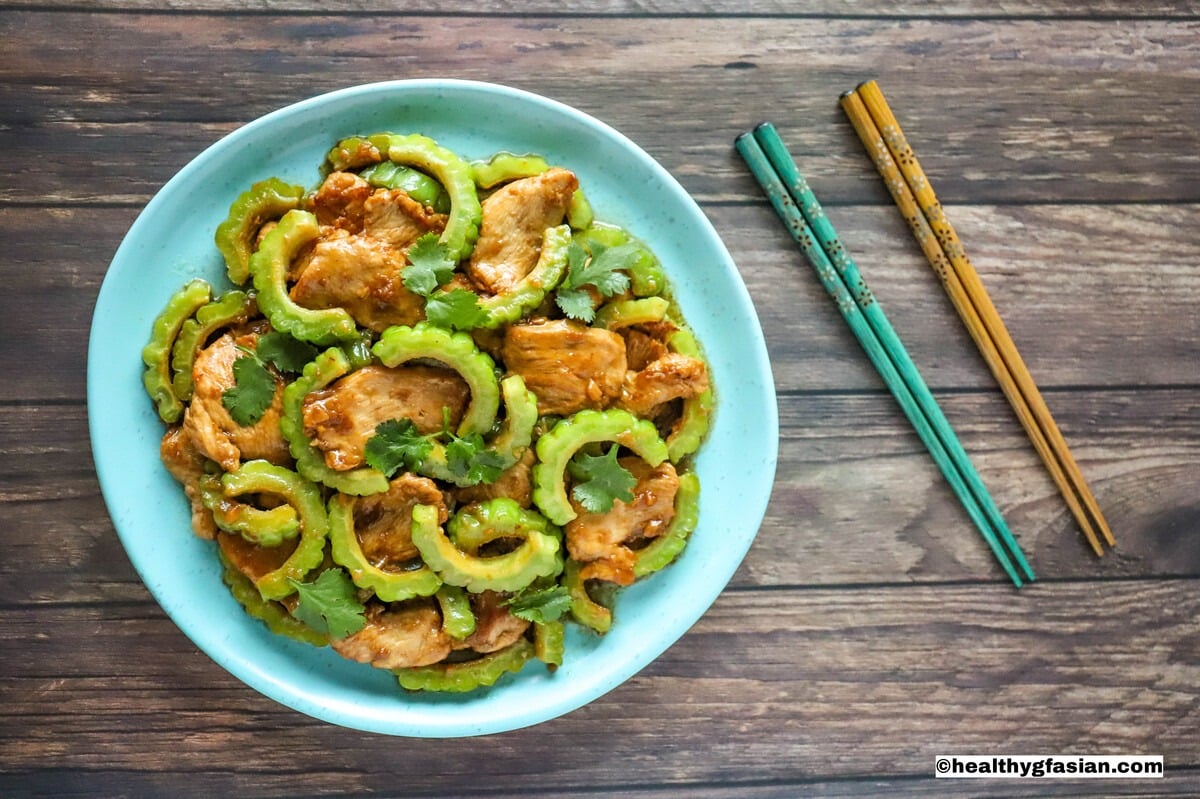

Chicken and Bitter Melon Stir Fry
Ingredients
- 8 tablespoons extra virgin olive oil
- 1 kg chicken breasts skinless and boneless, trimmed and thinly sliced against the grain
- 3 garlic cloves peeled and finely minced
- 1 inch ginger peeled and finely grated
- 2 bitter melon medium
- Steamed rice to serve For paleo diet, serve with cauliflower rice
For the Sauce:
- 3 tablespoons coconut aminos
- 2 tablespoons medium dry sherry
- 2 teaspoons honey optional
- 2 teaspoons potato starch mixed with ¼ cup water
For the Marinade:
- 2 tablespoon coconut aminos
- 2 teaspoons potato starch
- ¼ teaspoon ground white pepper
- 2 tablespoons medium dry sherry
For the Garnish:
- 2 sprigs of coriander (cilantro) including stems, roughly cut into 1 to 2 cm lengthwise
Instructions
- Wash the bitter melon and cut into half lengthwise. Use a spoon to scrape out the seeds and white pith completely.
- Slice the bitter melon lengthwise into 1cm thick pieces.
- Combine the chicken pieces with the marinade in a large bowl and mix well.
- Prepare and mix the sauce ingredients except the potato starch mixture in a separate bowl. Set aside.
- Heat up a wok with 4 tablespoons of extra virgin olive oil, pan-fry the bitter melon on medium heat for 2 minutes. Remove and set aside. Clean wok with kitchen paper towel.
- Add another 4 tablespoons of oil to the wok, then add garlic and ginger, stir-fry until lightly golden on low heat.
- Add all the chicken pieces and stir-fry for 2 minutes on high heat.
- Then add the sauce mixture prepared in step 4 and stir-fry for 2 minutes on high heat. Then add the potato starch mixture and bring to a boil.
- Return the bitter melon to the wok and continue to stir-fry until the sauce thickens and the dish is heated through. Turn off the heat.
- Garnish with some coriander (cilantro) and serve immediately with rice. For paleo diet, serve with cauliflower rice.
Recommended Products
Notes
